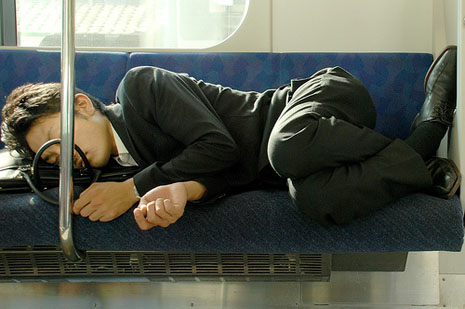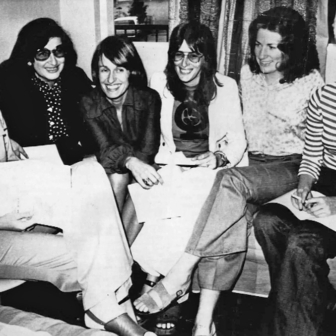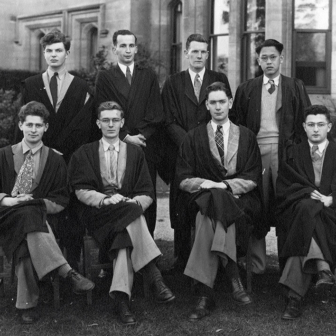Dreamland: Adventures in the Strange Science of Sleep
By David K. Randall | Norton | $32.95
Internal Time: Chronotypes, Social Jet Lag, and Why You’re So Tired
By Till Roenneberg | Harvard University Press | $39.95
A few years ago David K. Randall, a senior reporter for Reuters, experienced some disturbing sleepwalking episodes. On one occasion, he woke to find himself injured outside his bedroom. He had no idea what had happened to him, nor what had caused his night-time wanderings. He sought help from various doctors, including specialist sleep physicians, hoping for a diagnosis and, ideally, a treatment program.
Surprisingly for him, but not for those of us who work in the field, Randall was told that doctors can’t explain the cause of sleepwalking and, more importantly, they can’t guarantee that anything they suggest will stop people like him from somnambulating in future. Intrigued, Randall set off on a quest to find out more about what we do and don’t know about sleep. Dreamland is the result of that search; entertaining and well researched, it looks at the time we spend between the sheets and what happens when it doesn’t include enough sleep.
Where Randall’s book is very much an introductory overview of sleep research, Till Roenneberg’s Internal Time presents the science of circadian rhythms in rich detail. Part textbook, part handbook, part autobiography, it couples scientific information with largely fictional (and in some cases rather odd) case studies that serve to illustrate the application of much of the detailed biological science. This is the story of biological rhythm research over the past fifty years told by someone who was a part of it.
Although it’s true that we still have a lot to learn about sleep, David Randall covers much of what we do know in a very easy style. His 260 pages provide a nice summary of what we know about how sleep works, what it looks like (when we record it using electrodes on the head), what goes on when we have our eyes shut (mostly at night) and what happens when we don’t sleep. Randall discusses theories about the evolution of sleep, the impact of electricity and lighting on sleep in recent centuries, and the interaction of work and sleep in today’s open-for-business-24/7 world. He also delves into the believe-it-or-not part of the sleep world, describing the bizarre and in some cases rather horrific behaviour that can occur. Despite having spent the past twenty years studying circadian rhythms and sleep, I have to admit to struggling through some of the more disturbing cases.
The changing pattern of sleep in the Western world has implications for human health – from metabolic health to mental health – that we are just now discovering. Sleep is often last on our list of priorities. Many of us only go to bed when we have done everything else we need to do, and this can mean that we don’t spend the ideal time between the sheets. Information like this, which helps people understand the importance of sleep for health, well-being, quality of life, and safety on the roads or in the workplace, makes Randall’s book very valuable.
But it is not just a matter of prescribing eight hours of sleep for all. If we understand the role that sleep plays in healthy, happy lives then we are better placed to make informed choices about how we spend our time and how we prioritise activities. Sleep isn’t the be-all and end-all of life – although, as Randall describes, rats will eventually die if you keep them awake for long enough (and not as long as you might think). Rather, sleep is one element of our well-being, and how we fit it in among all the other parts of a healthy life – work, leisure, family time, socialising and being on our own – is the important part.
Randall certainly doesn’t claim to have found all the answers. Nor does he claim to have written a textbook or self-help book. What he does is provide a very entertaining and informative insight into that large chunk of our lives that many of us don’t spend much time thinking about.
Where Dreamland might be described as a mile wide and an inch deep – in a good way – Internal Time is an inch wide and a mile deep, and that’s not a bad thing either. Till Roenneberg, a professor at the Institute of Medical Psychology at Munich’s Ludwig Maximilians University, trained with one of the true pioneers of circadian rhythm research, Jürgen Aschoff. Although Aschoff’s name is not widely known outside the research community, postgraduate students and academics who work in the field began their careers reading his rules and learning them by heart. Essentially, he explained why our internal clocks synchronise to the world, why they get out of whack and what to do if you want to realign them. Having worked with Aschoff, Roenneberg is thus well placed to explain the science of circadian rhythms, which he has been a part of discovering, to a broader audience.
Circadian (circa – about, diem – a day) rhythms are biological rhythms controlled by our internal body clock. The exact timing of our individual clock is determined by our genes, but even without the daily cues of sunrise and sunset we will keep ticking over on a cycle of about twenty-four hours. (Roenneberg says that the fact his book has twenty-four chapters is a happy coincidence, but it does give a nice balance to the book.) Although the most obvious example of human circadian rhythms is our sleep–wake rhythm, physiological characteristics like body temperature, hormone levels, blood pressure and performance also fluctuate in a pattern across that period.
Internal Time contains very thorough descriptions of how our biological clock, located in a specific part of our brain, works. The detail might be too great for many readers, but the writing is relatively easy to follow and the technical descriptions are accompanied by graphs and images. An unavoidable drawback is that the case studies and examples are very eurocentric, which means most are out of sync with the southern hemisphere and Australian readers. Where Roenneberg discusses the perils and challenges of long nights in December, Australian readers can make the conversion to our winter relatively easily. But when a case study takes an individual from Frankfurt to Morocco, the conversion is a little trickier and may require a map or timezone converter.
Roenneberg also discusses how researchers in this field assess the internal time of individuals. A number of questionnaires have been developed to find out the times of the day at which different individuals prefer to perform certain activities. The premise is that individuals are largely switched on to their internal drivers and can state a preference for cognitive activity in the morning and for sleep between 10 pm and 6 am – as larks might – or a preference for cognitive activity in the evening and for sleep between 1 am and 8 am, like owls or adolescents. Such surveys have been validated against physiological markers.
Roenneberg and his team’s survey, using the Munich Chronotype Questionnaire, is based purely on the timing of one’s sleep on free days – those days when we don’t use an alarm clock. (For most of the population, this probably means weekends.) On this basis, he argues that we can fairly readily judge which “type” we are and attempt to adhere to our natural cycle – with benefits including greater alertness during waking hours and more positive moods.
While the questionnaire does give some indication of the internal timing of an individual’s body clock, a range of other factors influence the timing of our sleep. If we were in a bunker and free to do whatever we wanted, whenever we wanted, then yes, our internal clock would probably be the strongest driver of our behaviour. But in our homes and in our cities, the factors influencing our choice of bedtime are innumerable, even on free days. Social activities, television and other technologies are just a few of the factors that keep us out of bed on those nights when we know we don’t have to get up for anything in particular the next morning. Nevertheless, it is certainly the case that understanding our own fluctuations in performance, alertness, mood and hunger can allow us to use the time in our days well.
Dreamland and Internal Time are a perfect pair. The questions that Dreamland didn’t answer (and didn’t aim to) are largely addressed by Internal Time. But while Dreamland is definitely appropriate as bedtime reading owing to the lightness of the writing and the content, Internal Time is better consumed at or near your peak concentration times. Stories of partner-swapping, homicidal wives and space travel aside, the science of Internal Time will take some digesting, which is best done at a time of day when you can concentrate and process information most easily. Having said that, dozing off with stories of sleep crime on your mind may make for some interesting times in dreamland. •




